Month: June 2019
Apple WWDC 2019: iOS 13 Dark Mode, iPadOS, SwiftUI, and More
Months before WWDC, rumors spread about what to expect from Apple engineers in 2019. Users most anticipated the appearance of a dark mode and the disappearance of the old HUD volume indicator. Developers were looking forward to an iOS and macOS merger and the release of new development tools. Word also leaked that the iTunes app wouldn’t survive this year’s WWDC. And it didn’t.
And while Apple didn’t really outdone themselves this year, developers and the public still got flashy updates and shiny new features for their devices. Below is a rundown of the most prominent features Apple prepared for both users and developers this year.
iOS 13
Improving performance
At WWDC 2019, Apple introduced iOS 13. Now, the iPhone will be even faster. Face ID will unlock the phone 30% faster and app launch speeds will be doubled. There will also be changes to app packaging: the size of app downloads will get 50% smaller and the size of app updates will be reduced by 60%.
Apple made sure that previous generations of devices would still support iOS 13.
Apple didn’t want to make the same mistake as a few years ago when they encountered performance issues with iOS 10 on old devices. That’s why they’ve made sure that previous generations of devices will still be compatible with iOS 13. However, Apple did announce that iPhone 5s, iPhone 6, iPhone 6 Plus, and iPod Touch 6 won’t get the upgrade. iPhone SE is still in the game, though.
Dark mode
One of the most anticipated features of iOS 13 is a system-wide dark mode, which will be supported by all Apple apps. Third-party apps can integrate this feature with the Dark Mode API.
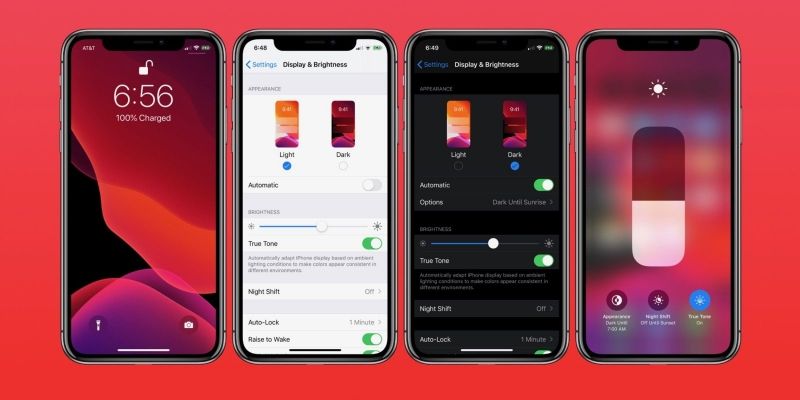
Swipe to type
Years after Android, Apple has added swipe typing to its iPhone keyboard for quicker text entry.
Updated maps
Apple has significantly rebuilt their maps, adding more details and overhauling the 3D street view. iPhone owners can now add their favorite places and locations to the map and save them to featured lists.
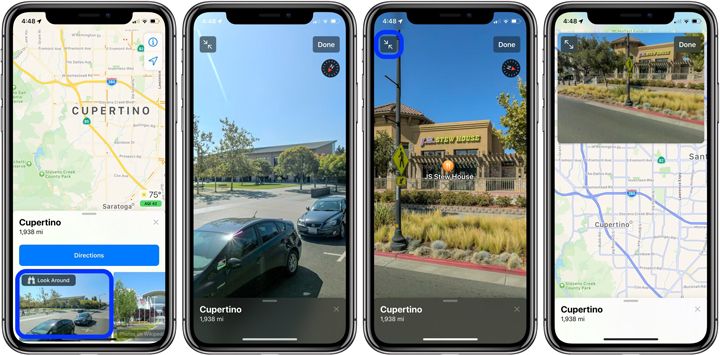
Secure your location
Now, users don’t need to confirm their location each time an app sends a request but can share their whereabouts just once. iOS users will receive background alerts if an app tries to access their current location via Wi-Fi or Bluetooth without their consent.
Sign In with Apple
Apple introduced a new privacy feature that allows users to sign into apps and websites with AppleID. With this feature, there’s no need to reveal an email address to third-party apps. Upon a user’s request, Apple will automatically generate a random email address and send it to third parties. All Apple ID accounts are protected with two-factor authentication, making Sign In with Apple a great way for developers to improve app security. Meanwhile, a new anti-fraud feature (Apple’s Real User Indicator) will verify whether new users are real people or bots.
Memoji
Memoji will receive new options, including a feature to create a more customizable avatar using make-up, piercings, and accessories. Users can add their memoji to the keyboard as well as store them in personal sticker packs.
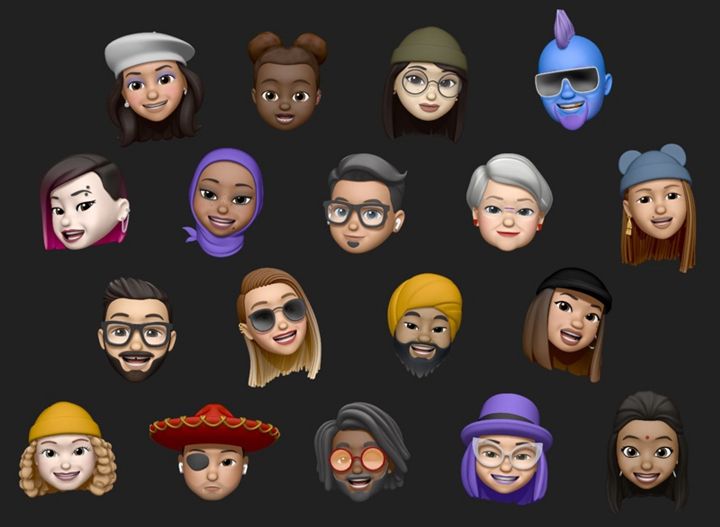
New volume HUD
At last, there will be a new volume indicator in iOS 13. It’s less intrusive (as promised) and seems more pleasant on the eyes. The indicator shrinks smoothly when you press the volume button for a second time. However, Apple still has to stylize the look of the volume HUD in apps such as YouTube.
Download manager
Apple has added a download manager to Safari, so users will be able to download and view files right from the mobile browser.
New Photos app
The Photos app will receive more editing tools with this update. iOS 13 also makes it possible to rotate, crop, and edit videos while applying filters and effects.
Thanks to machine learning, the Photos app will hide duplicate shots and show users only the most engaging photos taken by day, week, month, and year. In months mode, Photos organizes images by events that took place during a given month; years mode highlights photos of a specific person or recurring event over the years.
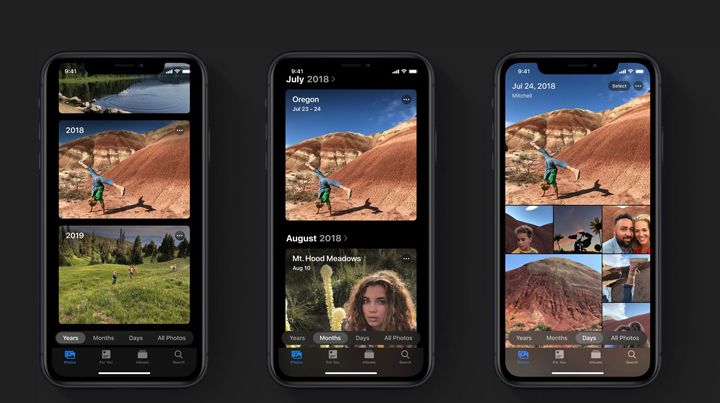
Siri
Siri will soon sound more human-like, though there’s no human involved. Her new voice is entirely generated by a neural text-to-speech service.
Siri Shortcuts comes as a preinstalled app on iOS13, so there’s no need to download it from the App Store anymore. The Siri Shortcuts app will also get a new Suggested Automations feature that suggests personalized shortcuts based on user behavior. In addition, users can set shortcuts to run at a certain time of day.
Unknown callers can’t bother you
If your iPhone doesn’t recognize a caller’s phone number, the call will be automatically redirected to voicemail. This way, users will be able to avoid unwanted and annoying calls.
What’s new for watchOS
New built-in apps
With the latest watchOS update, Apple engineers have added more apps, including apps for voice memos and audiobooks and a calculator with a tip function.
Apple is also bringing the App Store to the Apple Watch, allowing users to download and install apps right from their wrist.
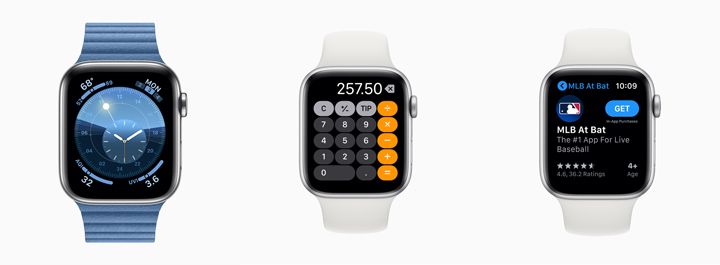
Independent apps
Just yesterday, developers had to build two different apps: one for iOS and one for watchOS. From now on, they can build independent apps only for Apple Watch.
Health features
Activity trends. The Activity app will now show users their activity progress for the past 90 and 365 days and compare current results to past sports achievements.
Hearing health. Apple Watch will take care of users’ ears by showing them the level of background noise in decibels and notifying them when it’s loud enough to cause hearing damage.
Cycle tracking. A new feature helps to control monitor menstrual cycles and fertility. This app will also be available for iOS.
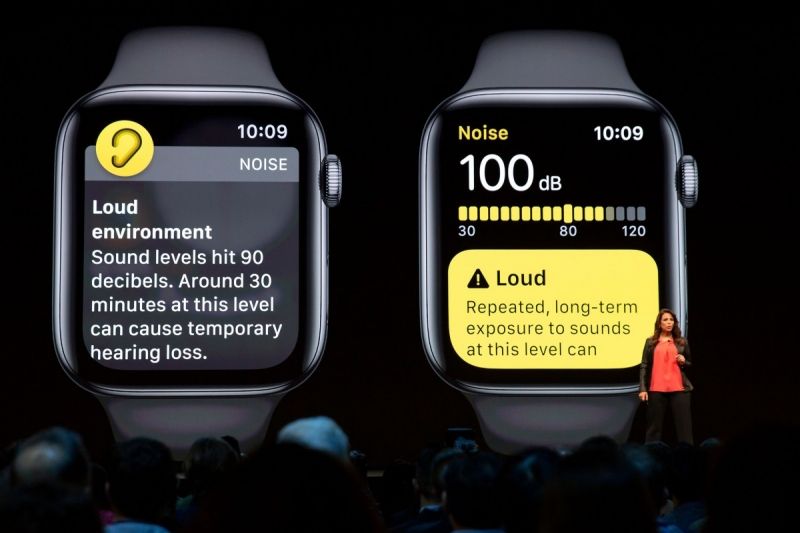
More watch faces
Apple presented several new watch faces, including a face that shows the Sun’s path across the Earth on a given day and a rainbow-colored watch face. Updates were made to older faces to include new features, such as an audiobook tracker and a noise level monitor.
Features for developers
As we specialize in mobile app development, we were looking forward to seeing what tools Apple had prepared for developers.
Project Catalyst
During the keynote, Apple announced Project Catalyst, previously known as Project Marzipan. Project Catalyst will let developers port iOS apps to macOS and iPadOS with minimum effort, as it’s designed to work with Xcode. For developers, this means they now need only one development team to develop apps for iPhone, iPad, and Mac. As a consequence, consumers will have more apps on both desktop and mobile platforms. With Project Catalyst, Apple might reach the goal that Microsoft hasn’t yet reached – merging all their platforms into one universal operating system.
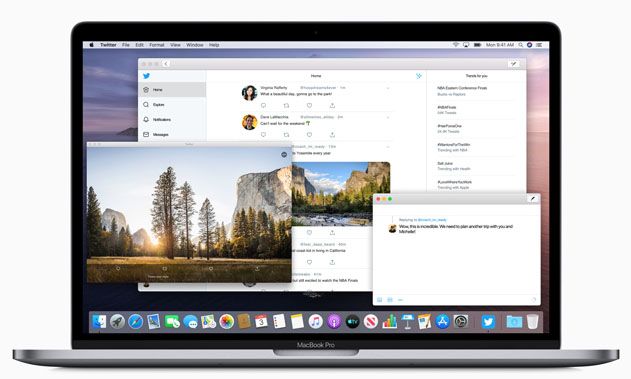
Project Catalyst will make it easier for developers to extend iPad apps to the Mac.
Gameloft, Twitter, and Atlassian have already ported their apps to macOS. Which means there will be a native Twitter app and Jira app available to download for the next version of macOS. Other third-party developers will also be able to offer iOS apps for Mac as soon as users update to macOS Catalina this fall.
Project Catalyst is already available to developers, along with the first beta version of new macOS.
SwiftUI
SwiftUI is a new UI framework that will allow developers to easily build native apps across all Apple platforms. Using simple declarative code, developers can create full-featured user interfaces with animations. SwiftUI provides a wide range of automatic functionality, including interface layout, dark mode, accessibility, right-to-left language support, and internationalization. Given that the SwiftUI API is built into iOS, iPadOS, macOS, watchOS, and tvOS, it becomes easier to develop native apps for all Apple operating systems.
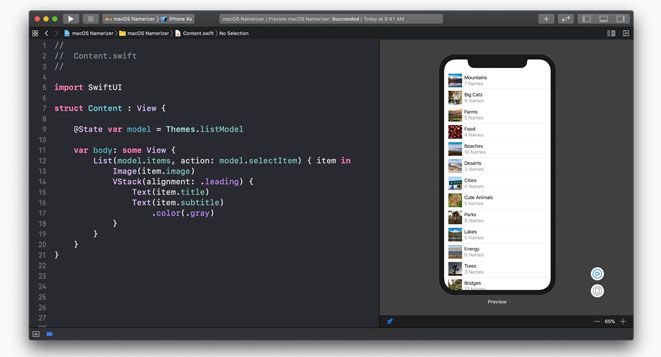
Using SwiftUI developers can build native apps across all Apple platforms faster and at minimum efforts.
Xcode 11
A new graphical UI design tool built into Xcode 11 allows UI designers to quickly assemble a user interface in SwiftUI without having to write any code. Swift code is automatically generated, and each code modification is instantly shown in the visual design tool. This gives developers the opportunity to see real-time previews of how a UI looks and behaves while they’re adjusting the code.
Augmented reality
During the conference, Apple also revealed ARKit 3, its latest set of developer tools for creating augmented reality (AR) applications on iOS. ARKit 3 now offers occlusion and real-time body tracking of people in a scene, allowing AR objects to be convincingly placed in front of and behind people. Apple also introduced Reality Composer and RealityKit to make it easier for developers to build and design lifelike AR experiences for consumer and business apps.
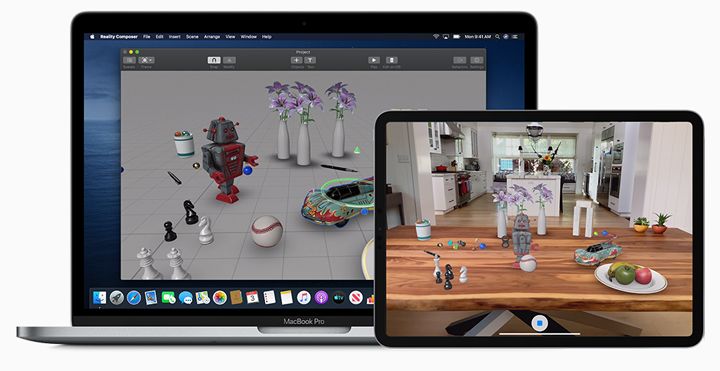
ARKit 3 brings people occlusion, motion capture and multiple face tracking to developers.
Machine learning
Apple presented the latest version of its iOS machine learning framework, Core ML 3. The updated Core ML 3 will make it easy for developers to integrate machine learning models into their apps. The ability to train multiple models with different data sets will also be part of a new Create ML app on macOS.
What’s more, developers can incorporate Core ML models into watchOS. A streaming audio API will allow users to stream from their favorite third-party media apps with just their Apple Watch. An extended runtime API will give apps additional time to accomplish tasks on Apple Watch while the app is still in the foreground, even if the screen turns off.
iPadOS
For the first time, Apple’s tablet will have its own operating system. Here are the main highlights of iPadOS:
- Desktop-class browsing in Safari
- Multi-touch navigation (including new gestures for copying, pasting, and undoing)
- iCloud Drive folder sharing
- USB drive support
- Slide over and Split view features, allowing users to work with two windows from the same app at once
- App Exposé feature
- PencilKit editing palette API for app developers
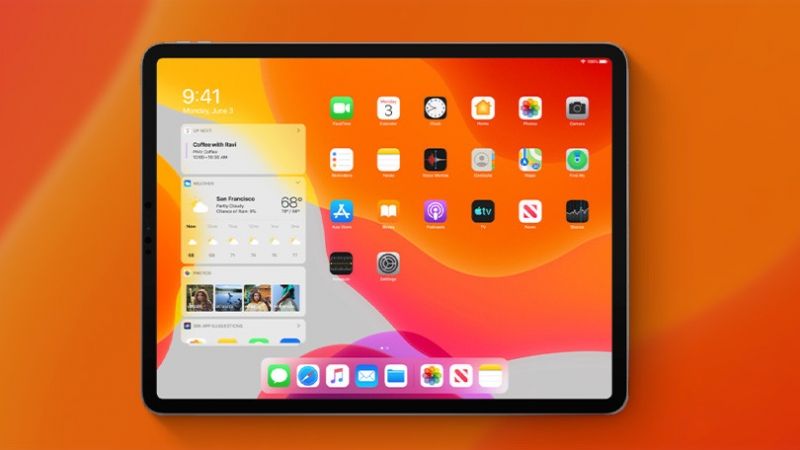
With the introduction of iPadOS, Apple has dropped support for the iPad mini 2 and iPad mini 3, as well as for the original iPad Air.
macOS Catalina
In the newest macOS version, users won’t find iTunes. As predicted, Apple is breaking its legendary app into three separate apps: Apple Music, Apple Podcasts, and Apple TV. Apple Music will be focused solely on music and offer personalized recommendations. The Podcasts app will deliver a more engaging podcast listening experience and an easy way to search for shows thanks to its machine learning feature. The TV app will include Apple’s exclusive content along with other providers’ shows.
Users will still be able to sync an iPhone or iPad with their Mac, but instead of iTunes, they will use the Finder app. iTunes will still live on for Windows PC users, though.
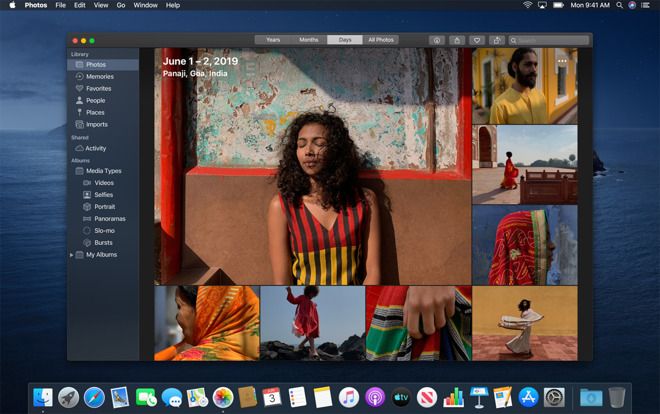
Find My
Apple has combined its Find My Friends and Find My iPhone apps. The new app can track Apple devices even when they’re offline by allowing devices to send a secure Bluetooth signal that can be picked up by nearby Apple devices. This feature is supported by macOS and iPadOS.
Activation Lock
This feature prevents the use of a lost or stolen Mac, and can be triggered remotely. To unlock a device with Activation Lock enabled, the device owner will have to enter their credentials.
Sidecar
This app allows an iPad to be used as a second Mac display. An iPad and Mac can be connected wired or wirelessly to support an extended desktop and allow a user to perform actions on both devices simultaneously.

Voice control
Apple also introduced a new accessibility feature called Voice Control that will allow users to control their Mac and iOS devices with their voice. This is great for people with various disabilities. More specifically, Voice Control includes:
- Text correction/editing
- Open apps
- Scroll instructions
- Tab-based navigation
- Button clicking
- Field navigation
- Maps view
- Volume control
- Local processing
Other novelties
AirPods updates
Siri is getting the ability to automatically read incoming messages over AirPods and respond to them. Users won’t don’t need to say “Hey Siri” to do this. Another feature enables music sharing between several phones through AirPods. No need to share earbuds anymore. All you need is to bring your device close to another person’s iPhone, tap that button, and voila – you’re already sharing the song.
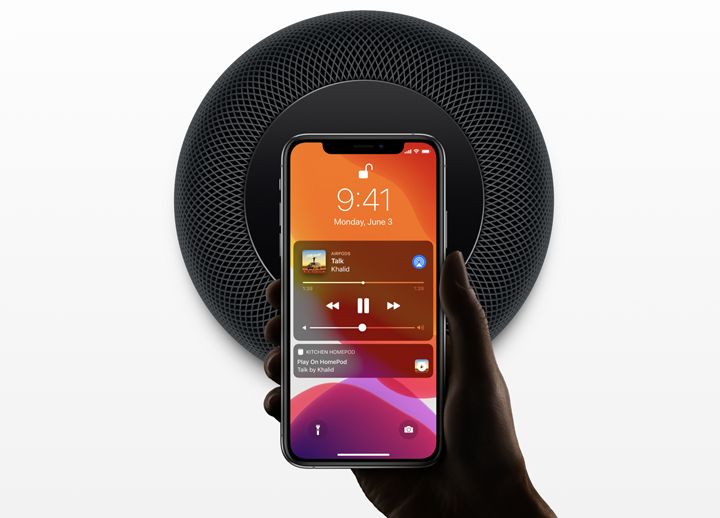
Mac Pro
It’s been six years since the last update to the Mac Pro. The high-end desktop computer got a total redesign and now looks like a cheese grater with wheels. Many were shocked by its starting price: $5,999 (including the stand). Well, what did they expect: the Mac Pro wasn’t meant for everybody in the first place.
So why is it so expensive? The Mac Pro received a massive hardware update that makes it a monster tool suited for professional musicians and designers. Mac Pro is now running an Intel Xeon processor with up to 28 cores and 300 watts of power. It will hit the market in the fall.

Wrapping up
WWDC 2019 marked the end of the iTunes era, announced the birth of iPadOS, and ushered in the partial independence of Apple Watch. A series of performance improvements were added to iOS13; however, privacy controls are the biggest concern for Apple. For this purpose, Apple introduced the Sign In with Apple feature, which will give customers more control over how their data is shared. However, there’s also a regulatory angle. In light of antitrust probes initiated by the US government, privacy efforts may help Apple to win over regulators.
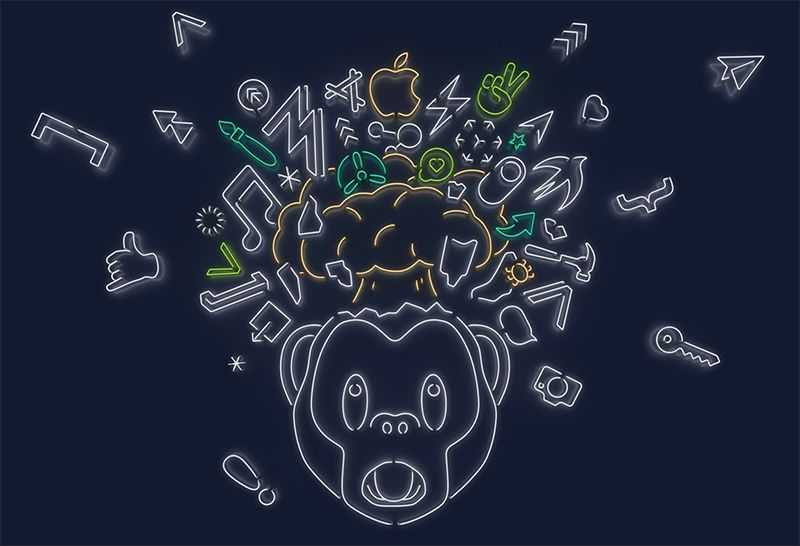
Tools presented for third-party developers – such as Project Catalyst and SwiftUI – make it possible to easily create one app that runs on all Apple platforms. Easy integration of machine learning and augmented reality will open more capabilities to both developers and businesses.
WWDC 2019 marked the end of the iTunes era, announced the birth of iPadOS, and ushered in the independence of Apple Watch.
The watchOS 6 update may be the most important release. Who knows: maybe in a few years, Apple Watch won’t require an iPhone and will be a completely independent device.
The same goes for the iPad, as the Apple tablet now has its own operating system and features that bring it closer to a laptop. Besides, macOS Catalina allows for a smooth transition between macOS and iPadOS by letting iPad app developers retune their apps for macOS in just a few simple steps.
iOS 13 and iPadOS betas are already available for developers, while public seeds will be released in July. The official launch of both operating systems is scheduled for the fall.


